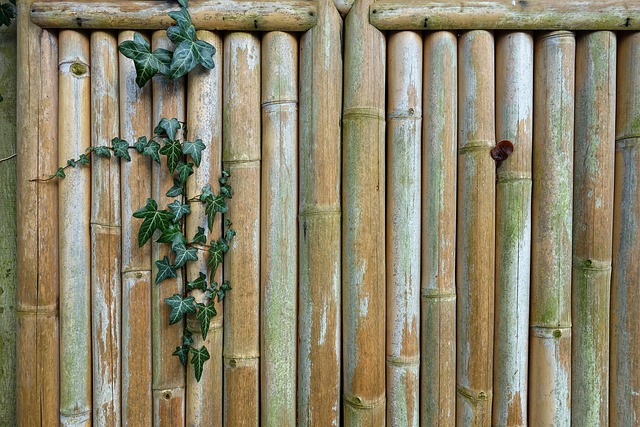Maximize Your Space, Minimize Your Budget: Cost-Effective Fencing Solutions for Large Properties
Fencing a vast expanse can seem like a financial burden. However, with strategic planning and creative thinking, achieving security and privacy on a grand scale doesn’t have to break the bank. This guide navigates the landscape of cost-effective fencing solutions tailored for large properties. From understanding specific needs to exploring innovative materials, design strategies, and expert installation tips, we empower you to transform your outdoor space while optimizing your investment.
- Understanding Your Fencing Needs for Large Properties
- Exploring Cost-Effective Materials and Designs
- Creative Alternatives to Traditional Fences
- Installation Tips for Longevity and Savings
- Maintenance Strategies for Optimal Fence Lifespan
Understanding Your Fencing Needs for Large Properties
When considering fencing solutions for large properties, understanding your specific needs is paramount. Factors such as the size and shape of the property, desired privacy levels, aesthetic preferences, and budget constraints play a significant role in determining the most suitable fencing options. Different types of fences cater to diverse requirements; for instance, tall, solid fences offer maximum privacy, while picket fences provide a more open, traditional look.
Additionally, functional considerations come into play, such as whether the fence needs to withstand harsh weather conditions, accommodate specific landscape features, or serve dual purposes like security and pet containment. Assessing these aspects will help guide the selection of materials, designs, and installation methods that align with your large property’s unique fencing requirements.
Exploring Cost-Effective Materials and Designs
When considering fencing for large properties, opting for cost-effective materials and designs can significantly reduce both initial installation costs and long-term maintenance expenses. One of the most popular choices is vinyl fencing. Not only is it affordable, but it also requires minimal upkeep, as it’s resistant to rot, rust, and fading. Vinyl comes in a variety of styles, from traditional picket fences to more modern, sleek designs, ensuring there’s an option that complements any property.
Another budget-friendly option is chain link fencing, which offers both security and versatility. It’s particularly suitable for large areas as it can be easily extended or customized with gates and rollbars. While metal may seem expensive upfront, its durability and low maintenance costs make it a worthwhile investment in the long run. Additionally, there are creative ways to incorporate natural materials like wood or bamboo, which can provide an aesthetically pleasing and eco-friendly alternative without breaking the bank.
Creative Alternatives to Traditional Fences
Traditional fences are often seen as the go-to option for property boundaries, but there’s a growing trend towards more creative and cost-effective alternatives. One innovative solution is living fences, which use fast-growing plants or hedges to create a natural barrier. This eco-friendly option not only saves on materials and labor but also adds a touch of greenery that can enhance the overall aesthetic appeal of your property.
Another unique approach is the integration of existing natural features like trees, rocks, or streams into the fencing design. These organic elements can be strategically placed to define boundaries while blending seamlessly with the surrounding landscape. Such creative alternatives not only reduce costs but also contribute to a more sustainable and visually appealing outdoor space.
Installation Tips for Longevity and Savings
When installing fencing for large properties, prioritizing longevity and cost-effectiveness requires thoughtful planning and execution. One key tip is to invest in high-quality materials that are suited to your region’s climate and soil conditions. Rust-resistant metals and durable vinyl or wood composites not only withstand harsh weather but also reduce the need for frequent repairs or replacements. Additionally, consider the layout of your property; strategic placement of fences can maximize coverage while minimizing material costs.
Regular maintenance plays a significant role in extending the life of your fence. This includes cleaning to remove debris and dirt, inspecting for signs of damage or wear, and promptly addressing any issues. Coating metal components with protective layers and sealing wooden posts can further protect against environmental factors. By following these installation and maintenance practices, you’ll not only save on immediate expenses but also avoid long-term costs associated with frequent repairs or premature replacements.
Maintenance Strategies for Optimal Fence Lifespan
Regular maintenance is key to extending the lifespan of your fence, especially on a large property where the impact of wear and tear can be more pronounced. A simple cleaning routine using mild soap and water can help remove dirt and debris, preventing potential damage from build-up. Inspecting the fence at least twice a year for any signs of rot, rust, or damage is also crucial. Repairs should be addressed promptly to avoid further deterioration.
Consider applying a fresh coat of paint or sealant every few years to protect wooden fences from the elements. For chain link or metal fencing, regular hosing down can keep it clean and free from corrosion. Keeping the area around the fence maintained, such as trimming vegetation, ensures that the barrier remains effective and visually appealing.
